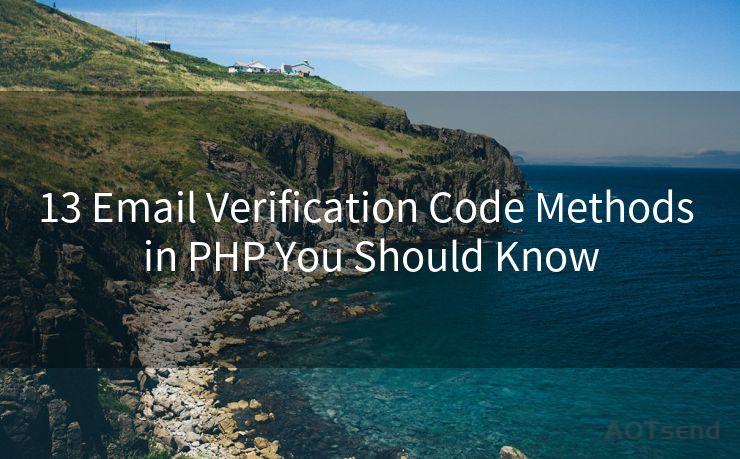13 Email Verification Code Methods in PHP You Should Know




When it comes to user authentication and security, email verification plays a crucial role. In PHP, there are various methods to implement email verification codes, each with its unique advantages. Here are 13 methods you should know about when working with email verification in PHP.
1. MD5 Hashing
MD5 hashing is a common way to generate unique verification codes. Although it's not considered secure for password storage due to its vulnerabilities, it can still be used for generating one-time verification codes.
🔔🔔🔔
【AOTsend Email API】:AOTsend is a Managed Email Service for sending transactional emails. Support Email Types: reminders, authentication, confirmations, notifications, verification codes, invoices, password resets, account activations, billing statements, two-factor authentication (2FA), and one-time passwords (OTP) emails, etc. $0.28 per 1000 Emails. 99% Delivery, 98% Inbox Rate.
You might be interested in:
Why did we start the AOTsend project, Brand Story?
What is a Managed Email API, How it Works?
Best 25+ Email Marketing Platforms (Authority,Keywords&Traffic Comparison)
Best 24+ Email Marketing Service (Price, Pros&Cons Comparison)
Email APIs vs SMTP: How they Works, Any Difference?

2. SHA-1 Hashing
Similar to MD5, SHA-1 is another hashing algorithm that can create unique hashes. It's more secure than MD5 but has also been proven to have some weaknesses. For verification codes, it can provide a decent level of security.
3. Unique Token Generation
Using PHP's uniqid() function or combining it with additional random strings can create unique tokens for email verification. These tokens are difficult to predict and provide good security.
4. Random String Generation
PHP offers functions like rand() and chr() to generate random strings, which can be used as verification codes. Ensure the strings are of sufficient length and complexity to maintain security.
5. Time-Based One-Time Password (TOTP)
TOTP is an algorithm that generates a one-time password based on the current time. It's often used in two-factor authentication and can be adapted for email verification, providing an extra layer of security.
6. HMAC (Hash-Based Message Authentication Code)
HMAC combines a cryptographic hash function with a secret key to ensure the authenticity and integrity of a message. It can be used to generate secure verification codes.
7. JWT (JSON Web Tokens)
JWTs are open standard (RFC 7519) tokens that define a compact, self-contained way for securely transmitting information between parties as a JSON object. They can be customized to include verification codes.
8. Using Third-Party Libraries
PHP has several libraries available that simplify the process of generating secure verification codes, such as the "random_bytes()" function from the Paragonie Sodium Compat library.
9. Base64 Encoding
Base64 encoding can convert binary data into an ASCII string format. While not inherently secure, it can be combined with other methods to create more complex verification codes.
10. QR Codes
QR codes are a type of barcode that can store large amounts of data. They can be used for email verification by encoding a unique URL or token that the user can scan with their device.
11. Custom Algorithms
Developing custom algorithms for generating verification codes can provide an additional layer of security. However, it's crucial to ensure these algorithms are well-tested and secure.
12. Two-Factor Authentication (2FA) Services
Integrating with 2FA services like Google Authenticator or Authy can add an extra level of security to the email verification process.
13. Combining Methods
For maximum security, consider combining multiple methods. For example, you could use a hashed token with a time-based expiration, sent via a secure channel like HTTPS, and require additional user input for verification.
In conclusion, there are numerous methods for generating email verification codes in PHP. Choosing the right approach depends on your specific security requirements and the level of protection you need for your application. Always remember to prioritize security and keep up with the latest best practices to protect your users' data.
By implementing one or a combination of these 13 methods, you can enhance the security of your email verification process and provide a safer user experience.




Scan the QR code to access on your mobile device.
Copyright notice: This article is published by AotSend. Reproduction requires attribution.
Article Link:https://www.mailwot.com/p670.html



